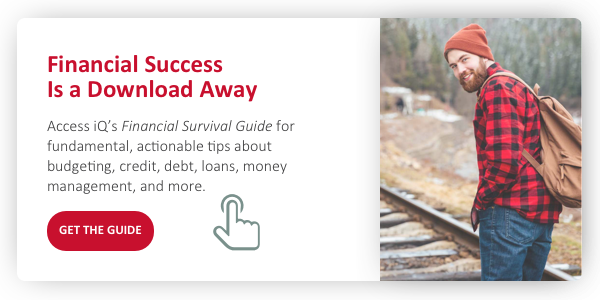
Managing personal debt has become an overwhelming challenge for Americans. Household debt reached $17.94 trillion by the third quarter of 2024, and 3.5% of that debt is delinquent. The average household debt is $104,215; this includes mortgages, car loans, student loans, and credit cards. According to a CNN poll, 39% of Americans are concerned they can’t pay their bills, an increase of 28% since December 2021.
Many Americans are struggling with debt and seeking out new ways to relieve financial stress using debt consolidation.
What Is Debt Consolidation?
Debt consolidation can provide some relief from monthly bills by transferring what you owe into a single low-interest or zero-interest loan or credit card. Debt consolidation is not the same as debt forgiveness. You still owe the money. However, with debt consolidation, you are restructuring your debt to make it more manageable, reducing both the interest you need to pay and your overall monthly payments.
For many families, debt consolidation makes good financial sense, especially for those who want to reduce their debt on high-interest loans and credit cards. Mortgages are the biggest debt for most families, increasing to an average of $244,498, followed by home equity lines of credit ($42,139), student loans ($38,787), auto loans ($23,729), and credit cards ($6,501).
Debt such as mortgages, student loans, and car loans tend to have fixed interest rates, so the monthly payments are consistent and easier to predict. Credit cards have revolving debt, so charges and interest fees change monthly.
Once you eliminate fixed debt, such as mortgages, car loans, and student loans, determine if you can pay off your revolving debt within six months. If you can’t, you might consider debt consolidation.
4 Common Debt Consolidation Strategies
Here are four of the most common strategies to consider for debt consolidation:
1. Credit Card Balance Transfers
Credit card debt is a chronic problem for many consumers. Credit cards make buying groceries, gasoline, and household necessities easy, but the debt quickly accumulates if you don’t pay the monthly balance. The average interest rate on credit cards is more than 20%, which means interest charges can stack up fast if you don’t pay your credit card in full each month.
A credit card balance transfer is one way to regain control of credit card debt. Many credit cards offer extremely low or 0% interest on balance transfers, so it makes sense to move the balance from a high-interest credit card to a low- or zero-interest card.
When assessing credit cards for a balance transfer, check the interest rates to ensure they are sufficiently lower than the rates you currently pay. Check for terms such as how long you get a special rate, which typically ranges from 6-18 months, and transfer fees, which typically range from 3-5% of the balance.
2. Personal Loans
Another way to reduce your monthly payments is with a personal loan. Most banks and credit unions offer personal loans at lower interest rates than credit cards. Plus, a loan has a fixed monthly payment, which makes budgeting easier.
Since a personal loan is unsecured, it can be harder to qualify for one. With an unsecured loan, there is no collateral, and you are borrowing based on your promise to repay the debt. You will need a credit history to qualify. Your credit score often determines the loan's interest rate and how much you can borrow.
When applying for a personal loan, be sure you understand the terms. Check the interest rate, application fees, and penalties for late payments.
3. Home Equity Line of Credit (HELOC)
If you own a home and have been making home loan payments, you will probably qualify for a home equity line of credit (HELOC). A HELOC is like a second mortgage that uses the equity on your home to guarantee the debt. Since it’s a secure loan, a HELOC usually offers a better interest rate, making it ideal for debt consolidation.
A HELOC is a line of credit, so you pay interest on the amount of credit you use. It uses revolving credit, so your monthly payments are based on what you owe and the interest rate. However, the payments should be lower than your credit card payments. Whereas most mortgages are structured to be repaid over 30 years, you can repay a HELOC in 5-20 years.
Because a HELOC uses your home to guarantee the loan, you could lose your home if you default or get too far behind on your payments.
4. Refinancing Your Home Loan
You can also leverage the equity in your home to pay your debts. Home loan rates are usually much lower than credit card rates, so refinancing your mortgage will turn your home equity into cash to pay off your debt and save you money in the long run.
When you consider refinancing your mortgage, check for hidden fees. While refinancing can free up funds to pay off high-interest debt, keep in mind that loan fees and closing costs may reduce the amount you have available. Also, consider the impact on your long-term financial strategy. For example, will refinancing your mortgage affect your savings? Is your home likely to appreciate? Will you still be able to save enough for retirement?
When you refinance your home, you don’t want to borrow more than you need. Your new mortgage should have a loan-to-value ratio of 80% or less (i.e., you owe less than 80% of the value of your home).
Tackle Debt Today
Debt consolidation can help you manage your current debt, but how will you prevent accumulating more debt? Be sure to have a comprehensive household budget and factor in the impact of any debt consolidation strategy.
Talk to your credit union about debt consolidation. iQ Credit Union has various credit card and loan options to help you tackle debt. The best place to start is with our free Financial Survival Guide—download it today.

Comments